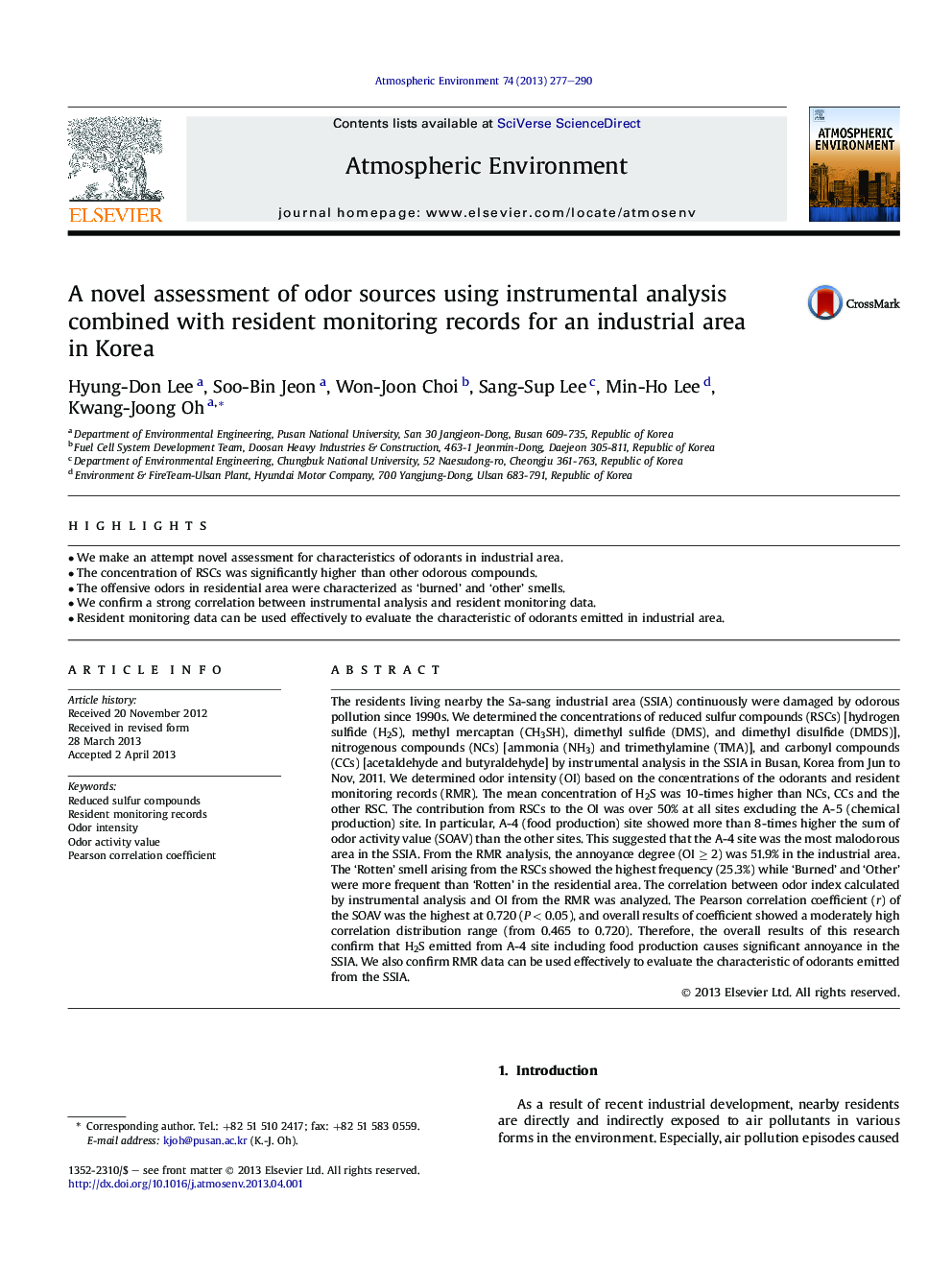| کد مقاله | کد نشریه | سال انتشار | مقاله انگلیسی | نسخه تمام متن |
|---|---|---|---|---|
| 4438194 | 1620397 | 2013 | 14 صفحه PDF | دانلود رایگان |

• We make an attempt novel assessment for characteristics of odorants in industrial area.
• The concentration of RSCs was significantly higher than other odorous compounds.
• The offensive odors in residential area were characterized as ‘burned’ and ‘other’ smells.
• We confirm a strong correlation between instrumental analysis and resident monitoring data.
• Resident monitoring data can be used effectively to evaluate the characteristic of odorants emitted in industrial area.
The residents living nearby the Sa-sang industrial area (SSIA) continuously were damaged by odorous pollution since 1990s. We determined the concentrations of reduced sulfur compounds (RSCs) [hydrogen sulfide (H2S), methyl mercaptan (CH3SH), dimethyl sulfide (DMS), and dimethyl disulfide (DMDS)], nitrogenous compounds (NCs) [ammonia (NH3) and trimethylamine (TMA)], and carbonyl compounds (CCs) [acetaldehyde and butyraldehyde] by instrumental analysis in the SSIA in Busan, Korea from Jun to Nov, 2011. We determined odor intensity (OI) based on the concentrations of the odorants and resident monitoring records (RMR). The mean concentration of H2S was 10-times higher than NCs, CCs and the other RSC. The contribution from RSCs to the OI was over 50% at all sites excluding the A-5 (chemical production) site. In particular, A-4 (food production) site showed more than 8-times higher the sum of odor activity value (SOAV) than the other sites. This suggested that the A-4 site was the most malodorous area in the SSIA. From the RMR analysis, the annoyance degree (OI ≥ 2) was 51.9% in the industrial area. The ‘Rotten’ smell arising from the RSCs showed the highest frequency (25.3%) while ‘Burned’ and ‘Other’ were more frequent than ‘Rotten’ in the residential area. The correlation between odor index calculated by instrumental analysis and OI from the RMR was analyzed. The Pearson correlation coefficient (r) of the SOAV was the highest at 0.720 (P < 0.05), and overall results of coefficient showed a moderately high correlation distribution range (from 0.465 to 0.720). Therefore, the overall results of this research confirm that H2S emitted from A-4 site including food production causes significant annoyance in the SSIA. We also confirm RMR data can be used effectively to evaluate the characteristic of odorants emitted from the SSIA.
Journal: Atmospheric Environment - Volume 74, August 2013, Pages 277–290